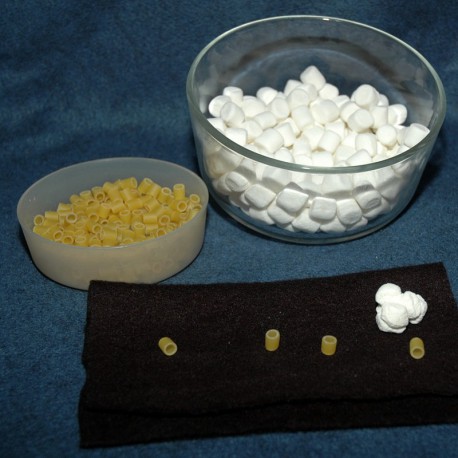 View larger
View larger
Nuclear Fusion in Stars
New activity
This simple and engaging activity explains nuclear fusion and how radiation is generated by stars, using marshmallows as a model.
Open Activity
How-to Video
-
Rating
-
Participants Enjoyed the ActivityParticipants Learned from This ActivityActivity Instructions Were Clear and Easy to FollowWould Recommend
Related Programming Resources
Reviews
Great dramatization
This was quite a crowd-pleaser, and a really effective way to demonstrate the collision of nuclei to create new ones and energy in the sun. I appreciated both the clarity and the detail of the explanations. The visual tie-in with the periodic table was particularly effective, as they readily tracked the conversion to helium, then beryllium, with the explanation of the instability of that and further transition to carbon if another collision happens soon enough.
I added a brief moment of zooming around in crazy paths before the nuclei collided to represent the randomness of their motion, and participants thought it was hilarious while understanding the rationale for the motion. It didn't take as much effort as I expected to stick the marshmallows together, so my first "helium" was a little smaller than the original two marshmallows and very sticky. After that, I was more careful to just attach them and not pulverize them.
I will definitely use this demo again to describe nuclear reactions.



